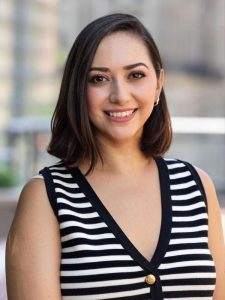My fourth year as an International Jurist contributor starts as a new cohort of foreign-educated LL.M. students start their 2025-26 LL.M. experiences.
The first half of 2025 and the 2025-26 arrivals
During the first half of 2025, I used my International Jurist platform to frame why I thought the U.S. was still generally attractive for residential LL.M. students. I highlighted some of the challenges that they could or would face, collectively and perhaps individually.
But based on what I was hearing from my own LL.B. students abroad, seeing from social media posts on RedNote and my own understanding of what makes residential LL.M. programs different from Online and Executive LL.M. programs, I was not surprised to see the initial press releases and social media posts from well-known LL.M. programs highlighting strong entering LL.M. classes and excited LL.M. students.
A few examples that caught my attention:
- Penn Carey’s press release (“135 bright and exceedingly accomplished lawyers from 38 countries, regions and territories”).
- Columbia’s social media post with a full orientation lecture hall (I received a nice message from an LL.M. who told me he’s in the picture and met one of my 2021 online LEALS students who is in the 2025-26 class).
- And my colleague Nicholas Kajimoto at USC Gould shared a nice montage from its Summer Law and English program.
There are many more, and I expect even more to come.
In fact, I am already starting to write letters of recommendation for my students (LEALSers) applying to U.S. law schools in 2025-26. If the U.S. is no longer a top destination, no one has told us just yet.
LL.M. 1.0, 2.0 and 3.0
LL.M. programs are not a new invention. For example, Harvard Law School celebrated its LL.M. program’s 100th anniversary in 2023-24. But LL.M. programs have taken on more importance for more law schools in more recent years.
I regularly share my own experience entering the LL.M. world and the business of LL.M. programming as a 3L in 2012-13. And I frame this by suggesting the shift from the LL.M. 1.0 era to the LL.M. 2.0 era is part of why I was hired straight from my own J.D. experience to work, support and teach LL.M. students.
Probably a much longer article for another time. But for this piece? I believe we are now entering what I consider the LL.M. 3.0 moment. Schools do not need to rely as heavily on their international residential LL.M. programs with the growth of other Non-J.D. options. I’ve highlighted the shift in focus into online LL.M. programs, M.S.L. degrees and non-degree programs.
Why I’m a fan of the LL.M. 3.0 moment
Overall, I think this is a great development for U.S. law schools and their programs for foreign-educated residential LL.M. students (I refer to them as “IRLs,” for international residential LL.M.s, although foreign-educated is a more appropriate term given the number of U.S. citizens and lawful permanent residents also in these programs).
Why?
I think there is less pressure on these LL.M. programs to “deliver.” As schools create more options for Non-J.D. programs, each school can decide how its “General” LL.M. program fits into its suite of Non-J.D. programs.
For IRLs, the R is a key focus. Residential LL.M. programs, especially for F-1 students, mean uprooting lives abroad. That can involve leaving jobs, incurring travel and moving expenses and experiencing the U.S. cost of living. Residential LL.M. programs add tens of thousands of dollars to the U.S. legal education experience. And so it is important to ensure the students who enter these programs are good fits and good matches for their programs.
Great experiences will ensure that LL.M. prospects continue to see the real benefits of their residential experiences.
Meeting the moment: 2025-26 pieces and interviews
For 2025-26, I’ll use my platform to highlight LL.M. programs, personnel, alumni and students I see “meeting the moment.”
My goal is to highlight some of the schools navigating this LL.M. 3.0 space in ways that create new opportunities for LL.M. students and lift all LL.M. programs and students — highlighting the best of what LL.M. programs are and can be.

When I saw that Diana Ramirez accepted a new position at Columbia Law School, I was excited for her. But I was equally excited for the Columbia team and Columbia’s LL.M. students and applicants. Including those I am connected with on LinkedIn, many of whom have shared exciting post-LL.M. career updates after the 2024-25 LL.M. year (including Juan Felipe Sáenz Dussán, whose name will be familiar to readers of my columns).
Given her great insight into the broader LinkedIn LL.M. community over the past few years, I thought she would be a great person to speak with as I start the 2025-26 year with International Jurist. Our discussion, from earlier this summer, follows.
Meeting the moment: Diana Ramirez
You studied in U.S. law schools as an international student (LL.M. and J.S.D.). What impact did going through the U.S. law school experience as an international student have on your philosophy on working with students from the other side?
Ramirez: It shaped everything about how I approach my work. I remember exactly what it felt like to prepare my visa documents, say goodbye to my home country, and land in a completely new city without knowing a single person. That experience — of navigating immigration systems, adjusting to a new culture, trying to find housing, and learning a new legal system all at once — never leaves you. It taught me how vulnerable and overwhelming the process can be, and because of that, I bring a deep sense of empathy to every student interaction. Since I started working with the LL.M. population, my personal mantra has been to make this experience for them what I wished my own experience had been.
Your posts resonate with so many people and at least from my vantage point, it is clear that the students who get to work with you think very highly of you and the support you offer. What do you find most rewarding about helping other foreign lawyers achieve their goals?
Ramirez: What makes this work so fulfilling is the human connection. Many of our students are making enormous personal and professional sacrifices to be here. To see them succeed, and to know that I played even a small role in supporting that journey, is deeply rewarding. It could be an email months after graduation sharing that they passed the bar, landed a dream job or simply want to say thank you. Those moments remind me that what we do matters far beyond the application or the classroom. It’s not just about academic success; it’s about helping people transform their lives. And in many ways, that’s a kind of impact that lasts longer and reaches further than what I could have done through legal practice alone.
You recently moved to Columbia Law School. Congrats! How has the adjustment been? What has been your favorite thing about the team you work with or in your position at Columbia?
Ramirez: Thank you! The transition has been exciting, intense and deeply rewarding. One of the things that has made it so smooth is the team itself. From Day 1, I felt welcomed, not just as a colleague, but as a person. The level of commitment this team has to applicants and students is exceptional. There’s a genuine culture of care, where people go out of their way to ensure students feel seen, supported and informed. I’ve been especially impressed by how much thought goes into the entire process — from communications and programming to how we design the student experience. Columbia doesn’t just focus on academic excellence; it’s also about connection and building a community that supports each individual, and I’m proud to be part of that effort.
I’ve worked for three schools in my career, and I like to think I take the lessons learned from each one. What is the biggest lesson from your time at Pace that you think helps you in this second position?
Ramirez: One of the most important lessons I took from Pace is that scale doesn’t determine impact. Whether your program is large or small, each student’s experience matters. At Pace, we often had to be resourceful and creative to support students in meaningful ways, and that mindset has stayed with me. I learned how important it is to constantly look for ways to improve systems, respond with empathy, and stay focused on the bigger picture: helping people succeed. That sense of purpose carries over into everything I do now. It reminds me that every email, every decision, every piece of support we offer can have a lasting impact.
The LL.M. year can feel hectic any year, as high-achieving LL.M. students balance the adjustment to a new culture/legal system/education system with courses, extracurricular activities, bar exam prep, job searches, etc. International students seem to have more questions than ever going into the new cycle. How are you and the Columbia Law team preparing for the 2025-26 application cycle?
Ramirez: We’re approaching the new cycle with the same energy and care that we bring to our current students. Right now, much of our focus is on ensuring the incoming class feels fully supported as they prepare for the transition to Columbia; this includes visa support, housing, orientation planning and academic advising. At the same time, we’re actively reflecting on how we communicate with future applicants. We know this process can be overwhelming, especially with so much uncertainty in the world, so we’re focused on being clear, responsive and approachable. We want applicants to feel like they’re not navigating this alone; that we’re here every step of the way.

